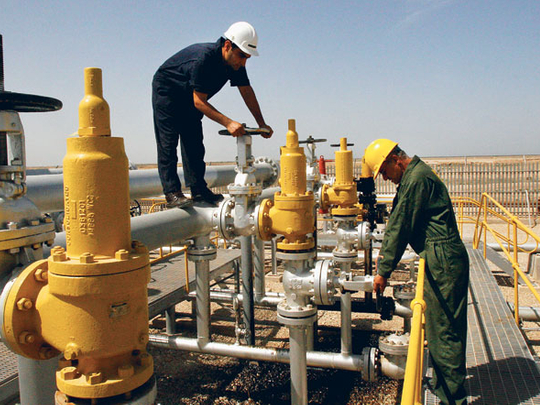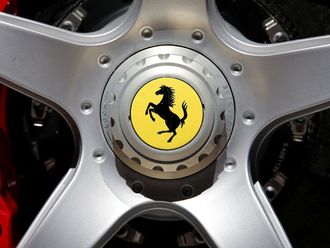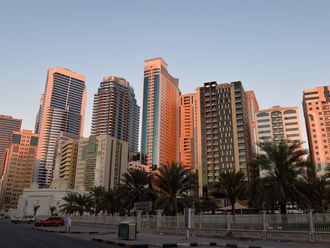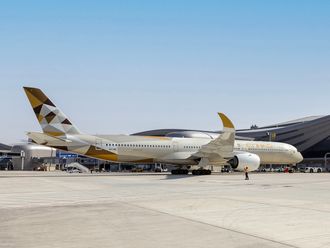
Singapore/Dubai: Saudi Arabia and other Opec producers are having to play a difficult balancing act in keeping high oil prices from eroding demand while at the same time protecting the value of their lower-priced, more sulphurous crude.
Middle East producers are selling their oil at the deepest discounts since 2005, as heavy sour crude values stay under pressure from a triple shock of China's growing appetite for diesel, Libya's civil war and Japan's March disaster.
Additional Opec supplies are having little effect on prices of lighter and sweeter crude. The loss of high-quality Libyan barrels over the past two months helped propel Brent crude futures to a 32-month high above $127 (Dh466) a barrel last week, trading about $3 below that peak yesterday.
Sweet crude deficit
"The problem is that the only spare capacity in the Middle East is sour," said Barclays Capital London-based analyst Amrita Sen. "Even if the Saudis increase production, there will still be a deficit of light sweet crude."
Brent's premium over Middle East benchmark Dubai reached its widest level since 2005 last week, depressing the value of Iranian, Saudi, Kuwaiti, Iraqi, Qatari, Abu Dhabi and Omani crude relative to the now-halted low-sulphur Libyan oil exports.
The premium is around $7 a barrel after nearing $8 on April 11, its widest since mid-2005, giving some credence to the Saudi view that the market is oversupplied, at least for sour crude. Oil minister Ali Al Naimi said the kingdom slashed oil output by about 800,000 barrels per day (bpd) in March. "Mr Naimi might have thought, ‘What is the good for me to put 800,000 barrels per day of sour crude in the market that nobody wants?'," said Sadad Al Hussaini, an oil analyst and former top official at Saudi Aramco, the world's largest oil company.
Top oil exporter Saudi Arabia is selling Arab Heavy crude to Asian term clients next month at $3.45 a barrel below Oman/Dubai, the deepest discount since February 2009, when oil demand was still mired in the effects of a recessionary crash.
Some traders see the move as an effort to re-balance a market that Barclays Capital called "massively out of equilibrium".
The initial trigger for the blowout in the sweet-sour spread was China's surging appetite for gas oil at the end of last year, when the government replaced coal-fired power generation with oil to meet environmental targets.
The Libyan disruption and Japan's earthquake then threw markets completely off balance. The former cut the availability of light crude while the latter raised requirements of sweet supplies for electricity and diesel for reconstruction, while reducing demand for sour crude at shut refineries.
Preventing blow-out
The addition of advanced refining capacity across Asia, estimated at almost 1 million bpd last year by China and India alone, has helped little in preventing the blow-out of the sweet-sour spread. The premium of Asian gas oil over sulphurous fuel oil has surged to almost $33 a barrel from $8 in July 2009.
Gas oil churned out from Middle East oil in Asia has plugged shortages in Japan in the past six weeks instead of going to Europe, where the light Libyan crude supplies are missing.
The discount for sour Russian Urals crude in the Mediterranean relative to dated Brent has also expanded to about $3.60 a barrel from less than $1 in November 2010.
Flows of light sweet West African crude to Europe have increased at the expense of shipments to Asia, where imports of heavy sour supplies are only starting to recover, as Japanese refiners resume intake following last month's earthquake.
"As refiners adjust and as the oil finds its proper home, that will take some of the spread away, but I don't think that it will remove it," said Jeremy Friesen, commodity strategist at Societe Generale.
Values for the lighter Middle East grades have rallied this week as refiners meet requirements in the run-up to increasing summer demand for transport and harvesting in Asia.
Abu Dhabi Murban, for example, jumped to a premium as high as 85 cents to the reference official selling price this week from about 30 cents earlier this month.
Japan's "natural appetite for Middle East crude is coming back and traders are anticipating that demand coming from Asia is getting stronger," said John Cross, a crude broker at Daman Quattro in Dubai.
But "there is an abundance of sour crude in the market and I think [the Saudis have seen that the instant response of pumping more sour crude is not going to fill in the gaps needed to cover the shortfall in the sweet crude," Quattro added.
Increased production
Although Saudi Arabia and other Opec producers increased production in response to the interruption of Libyan exports, Al Naimi said the kingdom cut output to 8.292 million bpd in March from 9.125 million in February. Naimi also said Saudi Arabia had sold two million barrels of a special blend of crude that tried to replicate the high quality Libyan barrels lost, but demand for the blend has been tepid, according to oil traders.
"If demand craters because the price goes too high, the people who have to cut [output] the most are the Saudis, so they want to keep the price under control," said John Vautrain, director at Purvin & Gertz energy consultants in Singapore.












